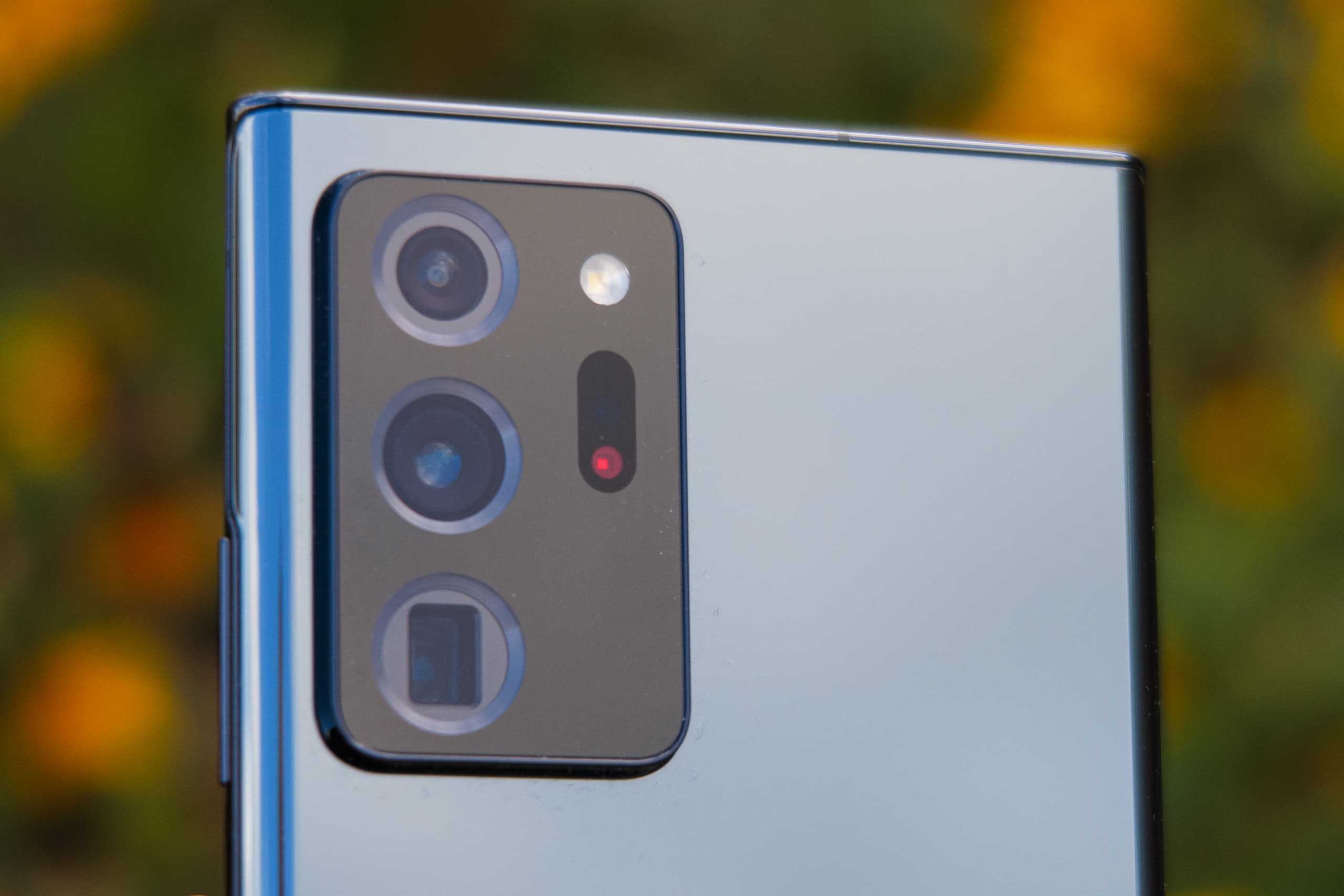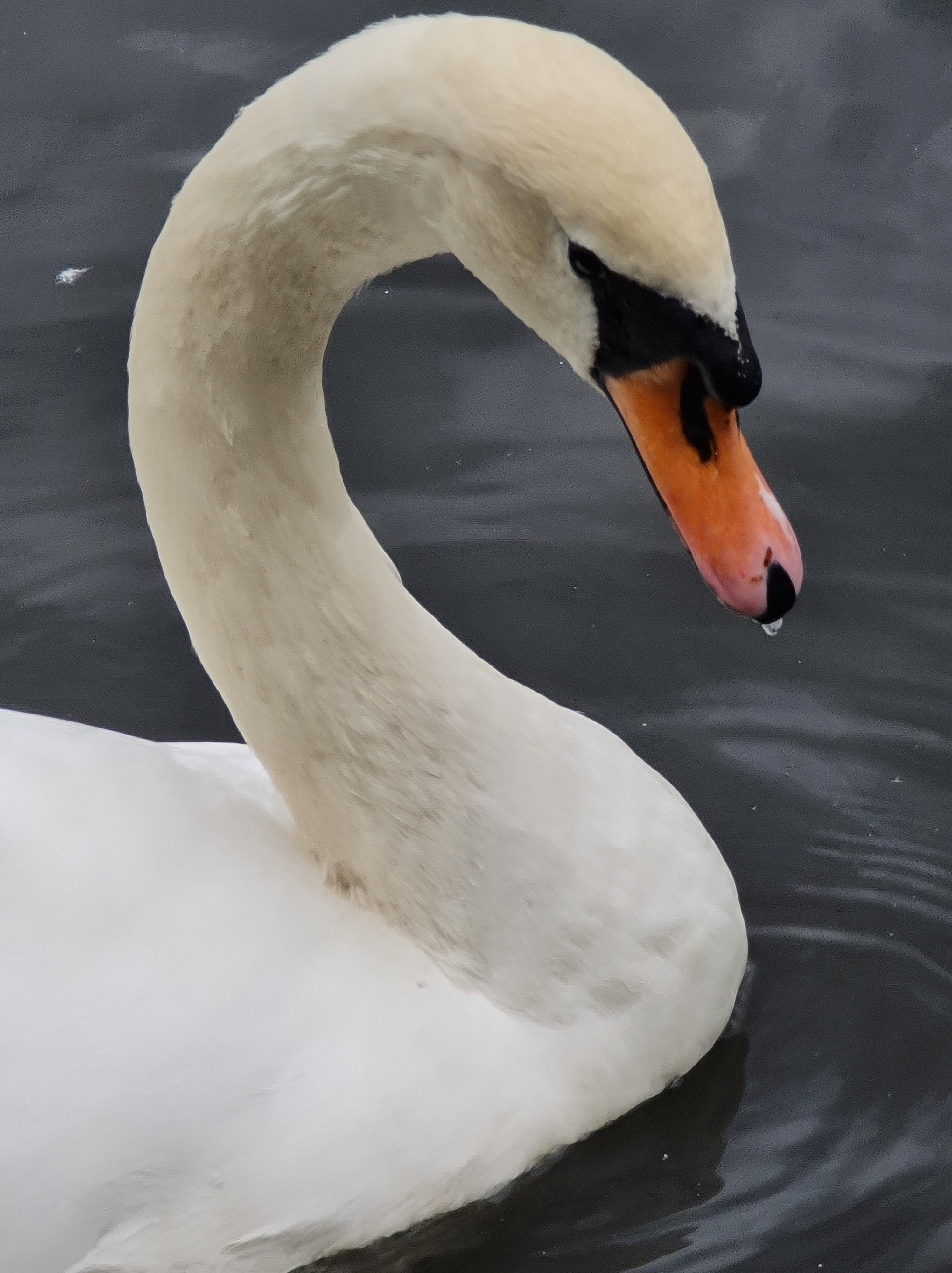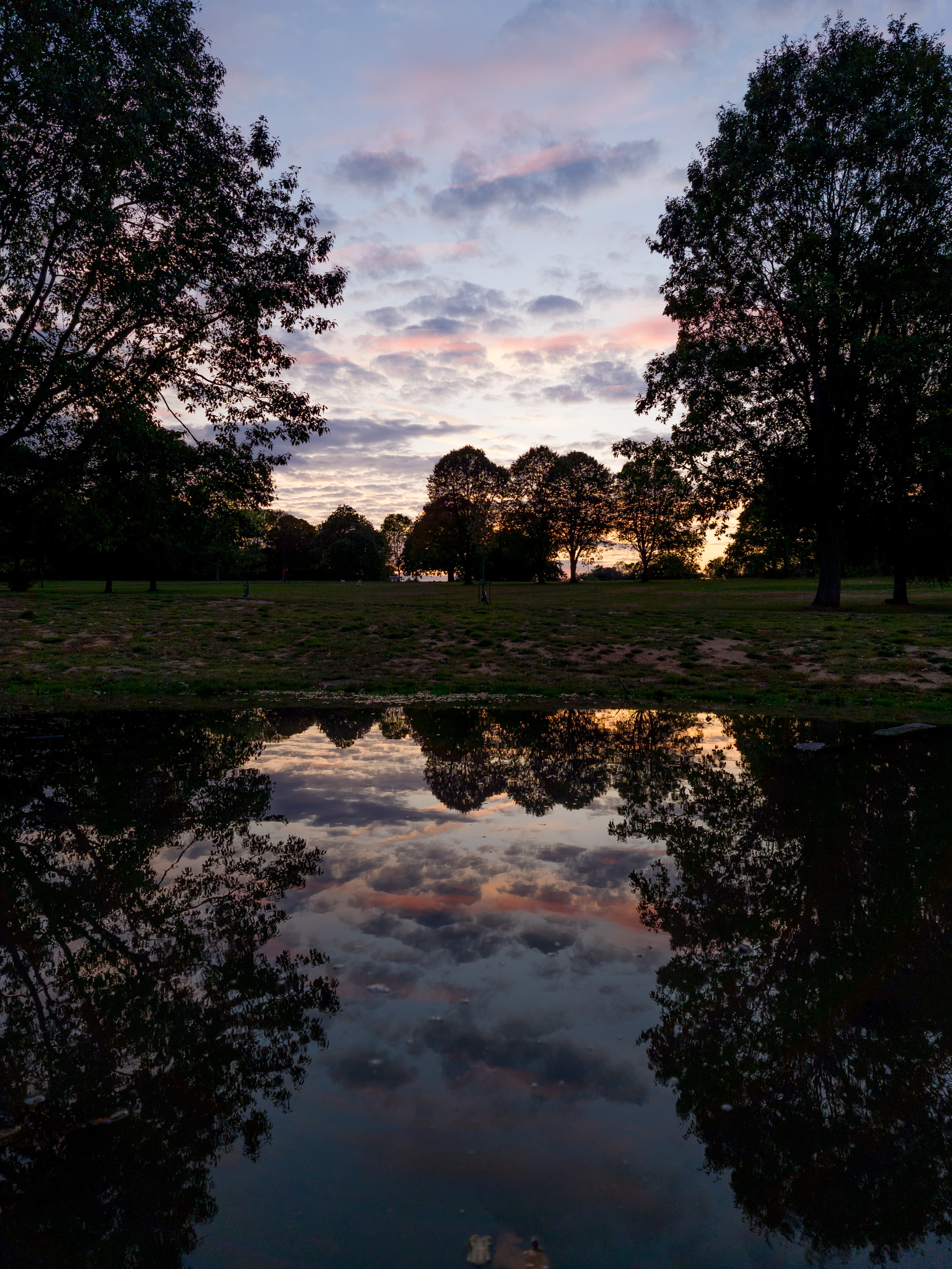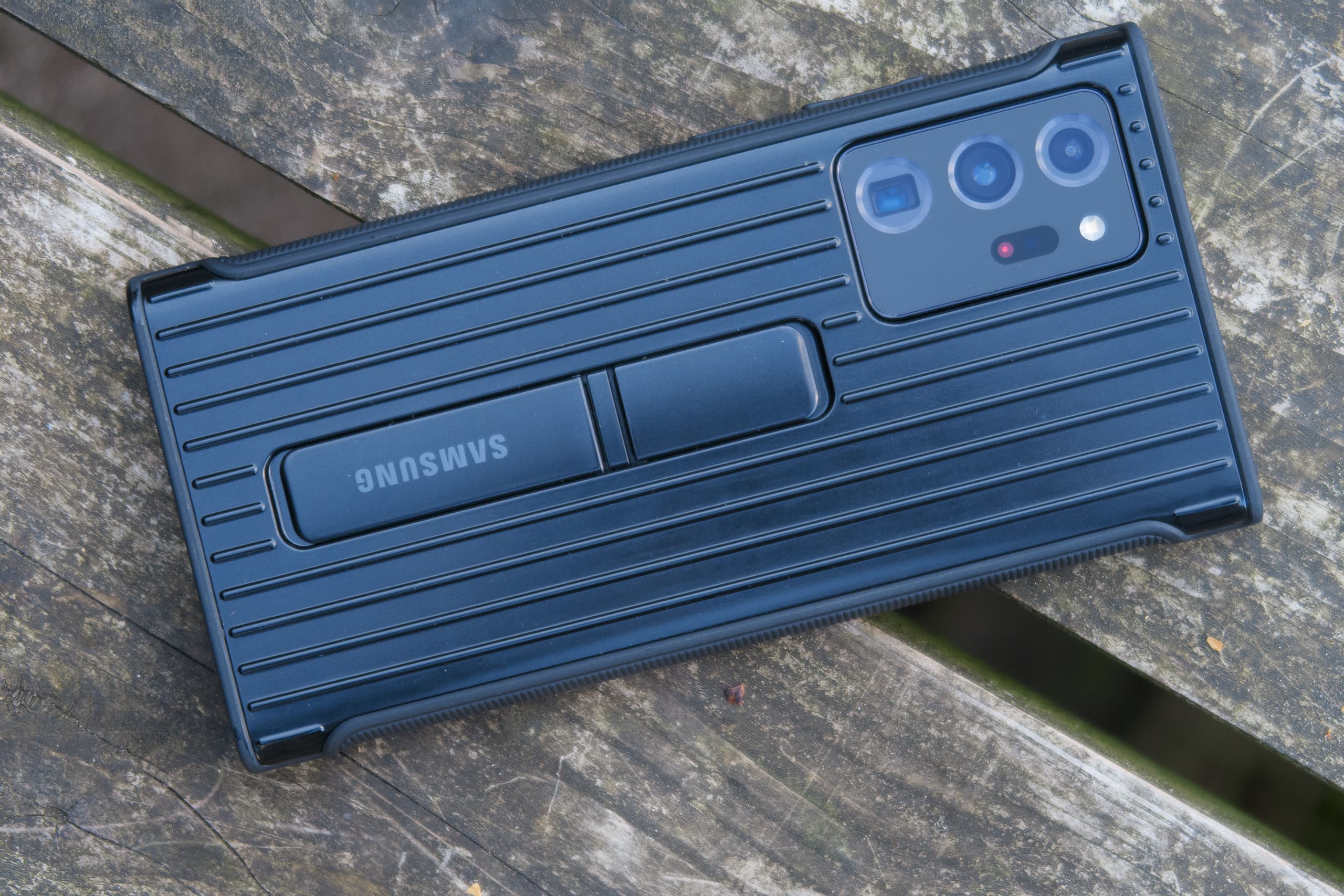Samsung Galaxy Note20 Ultra: At a glance
- £1,179 (256GB), £1,279 (512GB)
- Android smartphone
- 6.9in screen
- Ultra-wide, wide and telephoto cameras
- 12MP standard output
- See Samsung’s website for more details
Samsung is one of the three main players in the smartphone market, alongside Apple and Huawei. But with the latter’s access to Google’s Android operating system and Play Store stymied by US sanctions, it now looks like the brand of choice for Android users in search of a high-end smartphone.
Its latest model, the Note20 Ultra, offers a similar feature set to its recent S20 Ultra, but in a design that’s tilted more towards being a working tool. Notably it comes with a clip-in ‘S Pen’ stylus that allows you to write notes on the screen, and can also be used as a remote shutter release.
Samsung Note20 Ultra: Features
Like most flagship phones, the Note20 Ultra is a sizeable device, at 164.8 x 77.2 x 8.1mm and 208g in weight. This provides space for a huge, beautiful 6.9in screen, but I found it too large for comfortable one-handed use. The camera sticks out a couple of millimetres from the back, which means the phone won’t sit flat on a table. The obvious solution is to use a protective case.
High-speed 5G connectivity comes as standard, while the large 4500mAh battery should keep you going all day. The device currently ships with Android 10, and is available in three ‘mystic’ colours: bronze, white and black.
Of course, we’re most interested in the camera, which uses a similar triple-lens setup to its stablemate, while outputting 12MP files by default. Its main camera uses a 25mm equivalent f/1.8 lens with a 108MP sensor based on Samsung’s unique ‘Nonacell’ design, in which nine photosites are placed together behind a single red, green or blue filter, giving a colour resolution of 12MP.

The Note20 Ultra uses three cameras, ultra-wide, wide and telephoto, along with a laser rangefinder and small LED flash
In addition, there’s a 12MP, 13mm equivalent f/2.2 ultra-wideangle and a 12MP, 123mm equivalent F3 telephoto lens (a slight step down from the 48MP 103mm f/2.2 in the S20 Ultra). All three lenses are optically stabilised, and a new Advanced Hybrid Laser AF system employs a laser rangefinder to help determine the subject distance. Digital zoom is available to a decidedly ambitious 50x. If you’re interested in video, the device is capable of recording in 8K resolution at 24fps, 4K at up to 60fps, and Full HD at up to 120fps. But you’ll only get subject-tracking autofocus at Full HD and 60fps (or lower).
Samsung Note20 Ultra: Camera app
Samsung’s camera app can be launched quickly by swiping up from its icon on the lock screen, or double-clicking the device’s power button. By default it opens into the fully automatic Photo mode, which is laid out in a simple and approachable fashion. You can choose between the three camera lenses via onscreen touch buttons, or pinch to engage intermediate digital zoom levels. Along with control over the flash, self-timer and aspect ratio, it’s also possible to select the main camera’s full-resolution 108MP output. This disables the other cameras, but curiously allows up to 6x digital zoom.
More advanced users can take advantage of the Pro mode, which gives additional control over ISO, shutter speed, exposure compensation, white balance, metering and manual focus. It also enables recording of DNG raw files, but not 108MP JPEGs. Its biggest drawback is that it’s restricted to using the main camera only, which is really disappointing on a device with a four-figure price tag. Other specialised camera app modes include panorama, food, night and live focus; the latter selectively blurs backgrounds.
Samsung Note20 Ultra: Image quality
On the whole, the Note20 Ultra delivers really good-looking pictures. In its standard Photo mode the automated systems – exposure, white balance and high dynamic-range processing – all work well, giving images with attractive colour and realistic-looking tonal balance. As expected, its image files are optimised for viewing on a small screen, so if you pull them onto a computer and examine them up-close, you’ll see some obvious processing artefacts. But they look fine on the phone itself, or when shared on social media. The best results are to be had from sticking to the three native focal lengths, with the main camera being, not surprisingly, the best of the three.

The main camera gives colourful, detailed images. Samsung Note20 Ultra, 25mm equivalent, 1/290sec at f/1.8, ISO 50
The ultra-wide lens isn’t quite as good, with weaker detail and visible colour fringing if you look too closely. Meanwhile, the telephoto camera is generally pretty good, but can struggle with focusing on small subjects at middle distances. If you try to focus it too close, the device can also jump to using the main camera with 5x digital zoom, which really isn’t what you want. Engaging the 108MP mode will give you the maximum possible detail, and while the files look highly processed when examined on a computer, they’re similar to conventional 24MP cameras in terms of recorded detail.

Images are acceptable with moderate levels of digital zoom. Samsung Note20 Ultra, 10x zoom (250mm equivalent), 1/250sec at f/3, ISO 50
In contrast, using digital zoom will rapidly rob you of detail, and I’d avoid going beyond the 10x mark. But this still counts as a 250mm equivalent telephoto, which is impressive for a smartphone. In Pro mode the camera won’t engage its HDR mode, so JPEG files don’t benefit from the same tonal balancing. However you can record DNG raw files and process them later on a computer to produce your own interpretation of the image, with a reasonable degree of latitude for making adjustments.
Samsung Note20 Ultra: Verdict
With its decent image quality and versatile set of lenses, this is one of the best smartphone cameras available. But it’s not radically different to the S20 Ultra, with the choice probably hinging on whether you like the idea of the Note’s S Pen stylus.

This image was developed from DNG raw file. Samsung Note20 Ultra, 25mm equivalent, 1/60sec at f/1.8, ISO 50
Both are very large and expensive, although competitive with the iPhone 11 Pro Max. It’s just a shame Samsung doesn’t make a smaller, cheaper model with the same camera, like the iPhone 11 Pro or Sony’s Xperia 5 II.

Samsung Note20 Ultra – key specifications











